January 26, 2021 at 9:48 pm
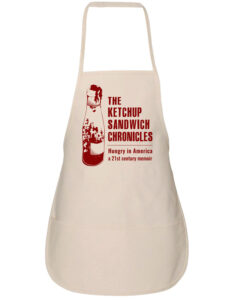
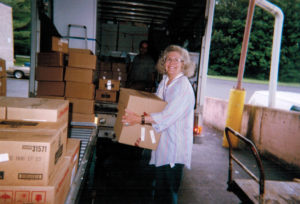
It’s easier than you think.
Step 1:
Choose the food pantry, homeless shelter, school, church, food bank, or soup kitchen to receive the food you collect.
Step 2:
Contact your recipient, and learn what items the hungry people need. Try to be specific. Can they only accept canned food items or can they use frozen and fresh foods? What about pet food?
If they need pet food or food for homeless people, for example, request those items (with specific food item suggestions) at your drive.
Step 3:
Decide how you want to collect the donated food.
The method I prefer is, of course, the one that worked for me several times. I recommend this method:
Gather some large empty grocery bags in good condition.
Attach a letter to each one saying something like:
Dear Neighbor:
“We are having a food drive in this neighborhood. Please fill this bag with food and set it out on your entryway on ………………………….. when it will be picked up between 00:00 and 00:00. Include am and pm to be more specific.
We need the following kinds of food:……………………..
Your donated food will be donated to ……………………………… Thank you for your generosity. If you have any questions, please call…………………………………. Signed…………………………………….”
Set the bags out at every address in the area you selected.
On the appointed date, return to the addresses and pick up the bags of food.
Step 4:
Deliver them to the selected food pantry, homeless shelter, school.
Step 5:
Pat yourself on your back. You did a great job!
My experience with this food drive method is that people respond positively because you give them bags, tell them exactly what food items you need, and return to pick up the food at a specific time on an exact date.
Thank you in advance for all you are doing to feed your neighbors.
Please post this article on your favorite social media network.
Share it with your friends.
Have a wonderful day!
Thurman Greco
www.hungerisnotadisease.com

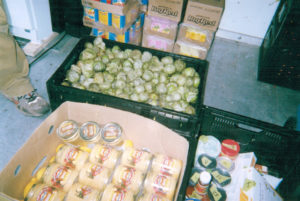
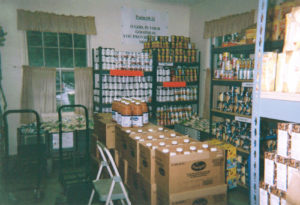
January 13, 2021 at 3:32 pm
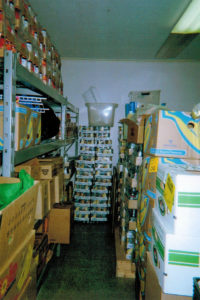
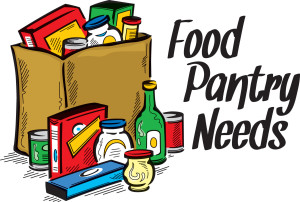
Actually, there are literally thousands of foods which are good for a food drive. Choose the foods that make eating easy.
Many food drives and food distribution activities are springing up throughout our country. Thank Goodness!
People are shopping at food pantries and food distribution centers in greater numbers than ever before. People who never, ever, even paid attention to food pantries now find themselves in lines.
We have now reached the point where we all have choices: If we don’t need to shop at a pantry, then we need to give food to a pantry.
So, then, the question: What are good things to give?
The answer: any foods which make eating easy.
Breakfast foods include:
cereal, granola, granola bars, protein bars, shelf stable milk, juice.
Lunch foods:
peanut butter, jelly, canned fruit, canned pasta, tuna, mayonnaise, and catsup.
Dinner:
pasta with sauce, taco kits, canned soups, stews, canned beans, macaroni and cheese, canned tuna, salmon, sardines, chicken.
Staples:
People shopping at a food pantry also need items such as salt, pepper, sugar, seasonings, cooking oil, mayonnaise, mustard, catsup, paper towels, paper napkins, forks, knives, spoons. Is there an item that you use regularly, maybe that item will be good for a food pantry gift.
Items of Dignity:
soap, shampoo, laundry soap, dishwashing soap, sanitary napkins, toilet paper. toothpaste, tooth brushes. razors
Infant needs:
diapers, baby soaps, baby lotion, baby foods
Pet needs:
pet food, both dried and canned; cat litter, puddle pads, gently used pet beds, leashes.
Homeless needs:
food that does not need refrigeration, food that can be distributed in single servings



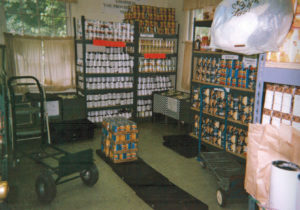
Thank you for reading this blog post. Please refer it to your preferred social media network.
Thurman Greco
January 6, 2021 at 7:47 pm

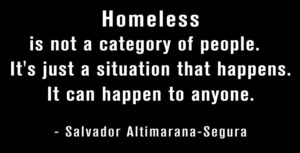
If you read my last post – “Food Pantry Rules” – you may have thought you were in some time warp. Travel had returned you to about 2010.
Well, not really.
The pandemic changed many details but the bones of a food pantry event are the same.
The volunteers and the people who shop at the pantry are the same.
Everyone comes together looking for groceries but often, they want and need far more.
Food pantry lines get longer every pantry day because people, families, struggle with change they didn’t ask for.
They are rewriting their destiny stories without a road map or instructions.
A number of people in the food pantry, both shoppers and volunteers, didn’t know about food pantries until circumstances set up a situation where they suddenly looked around and realized they were in a car in a long line waiting for food.
There is a name for this category: SITUATIONAL POOR.
A person fits into the situational poor category when she lands in a situation created by an event such as a hurricane, fire, flood, pandemic, or other disaster which destroys the home, car, job.
Food pantries offer much – peace, community, spiritual connection, groceries.
A food pantry in the basement of a church is a cross between a church and a busy pizza place.
A food pantry in a line of cars in a pandemic is reminiscent of the mass food distributions we held periodically in New York State after the collapse of the economy in 2008.
A line of cars filled with people needing food wraps around the block, down the road, and even further.
A whistle blows.
The cars begin to move. A volunteer puts a bag (s) of food in each vehicle.
Everyone wears masks.
There are still food pantries where people show up to a church and receive a bag of groceries.
But, whether the food is distributed to hungry people in cars or to hungry people walking to a building, a food pantry distribution is not a program. It is a community made up of those who gather the food and distribute it, and those who receive it. The process of distributing the food to people creates a change in everyone.
The experience does not heal a person. Nor does it change the story. It does not offer therapy. The experience itself is a conduit for each person’s own spiritual growth and change.
Never once when I was involved in a food pantry did I kid myself into thinking that I was winning the war against hunger. And, I do not kid myself now.
I know this food pantry food distribution experience does not end hunger. Instead, it offers food for several meals. And, that is all.
Ending hunger is another matter altogether.
I do feel, though, that the rules are changing. The pandemic experience is altering the hunger situation dramatically, at least. The pandemic experience is altering the hunger situation permanently.
“How is that?” you ask.
The pandemic has changed how our food is grown and distributed. Food pantries are a link in the food distribution chain. This chain now looks different. The link connections are different.
“How is that?” you ask.
For one thing, the restaurant industry is different.
Food production and distribution is different.
I do not think we know yet just what the fallout is. We have yet to live out the end of this story. We’re living and experiencing the future. For some, it is hard to see the big picture because the changes have not yet come around for each of us to see and experience in our daily lives.
In any event, the Pandemic is not us what we think. Our opinions and preferences don’t count for much here.
One thing is certain, our future is destined to be different from a future without a Pandemic. Another thing is certain for me: We can never return to our past.
We are all destined to experience a new Pandemic future.
Whatever the future brings, we need to keep on feeding the hungry in whatever way that works.
Thank you for reading this blog post. Please forward this article to your preferred social media network.
Share it with your friends.
Thurman Greco

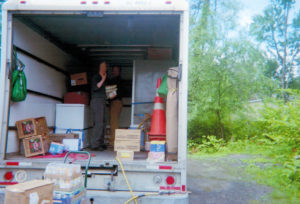

January 5, 2021 at 8:53 pm

A food pantry is what it is because of three things:
the economic situation at the moment
the volunteers
the people who shop there.
The people come together looking for groceries but often, they want and need far more.
While the coronavirus pandemic rages, the food pantry lines get longer every pantry day because people, families, deal with change they didn’t ask for.
In short, they are rewriting their destiny stories without a road map or instructions.
A number of the people in the pantry, both shoppers and volunteers, didn’t know about food pantries until circumstances set up a situation where they suddenly looked around a room and realized where they were.
There is a name for their category – SITUATIONAL POOR.
A person fits into the situational poor category when s/he lands in a situation created by an event such as a hurricane, fire, floor, pandemic, or other disaster which destroys the home, car, job.
Pantries offer much – peace, community, spiritual connection, groceries. I always think of a food pantry in the basement of a church as a cross between a church service and a busy pizza place.
A food pantry, and those connected with it, are not a program. They are a community. As volunteers, all we really do is open the door. As all the hungry people walk through the door, they undergo a change somehow.
Each person in a pantry, in whatever capacity, has experienced rejection in some way – too young, too old, too crazy, too sick, too poor, not poor enough.
The food pantry experience does not heal a person, nor does it change the story.
The food pantry experience does not offer therapy.
The food pantry is, instead, a conduit for each person’s own healing.
FOOD PANTRY RULES
Sign your name in the register as you enter the pantry.
Find a place in line.
Do not crowd or block the door to the pantry room.
No more than 2 shoppers are allowed in the pantry at one time.
No more than one new shopper is allowed in the pantry at one time.
Shop for a three-day supply of food for everyone in your household.
Place your selections on the table as you shop.
Respect the restrictions on certain foods.
Finish your shopping in 10 minutes.
Once you begin to bag your groceries, do not continue to shop.
Because the food availability is different each time you shop, it is best to visit the food pantry weekly.
Thank you.
Thurman Greco
P.S. The rules may be different at the pantry where you shop. Each food pantry is different. The space is different. The times the pantry is open is different. The management is different.
These specific rules were used in the food pantry I managed where the people were many, the space small, and the hours few.
Please forward this article to your preferred social media network.
Share it with your friends.






















